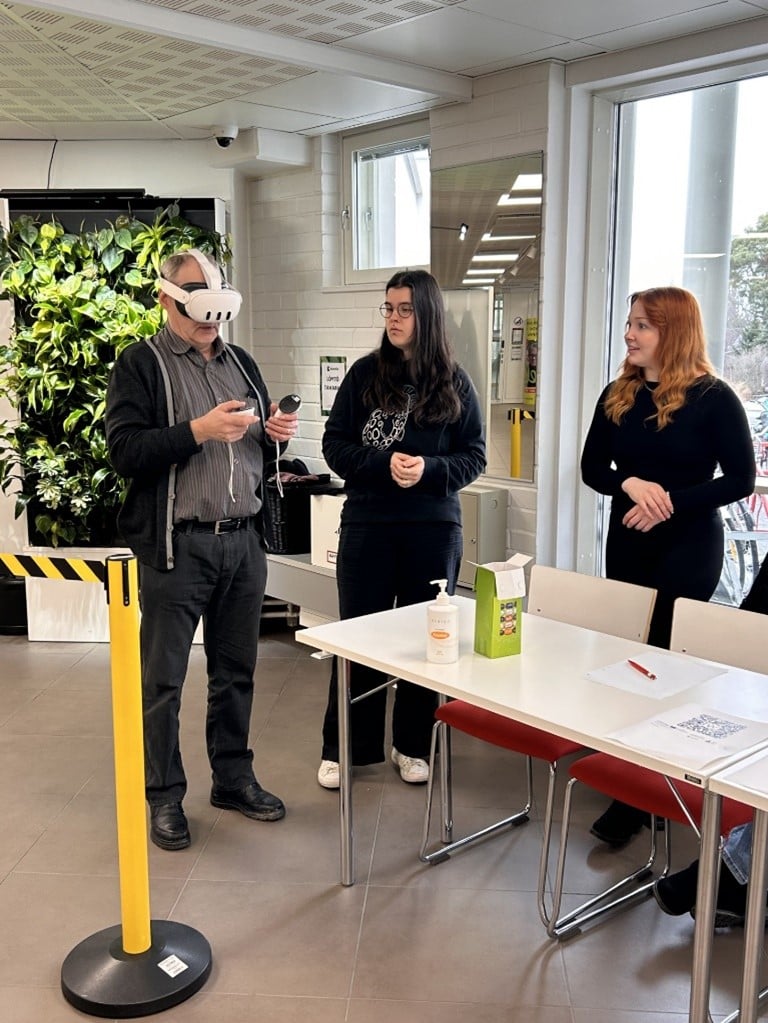Remote meetings and distance learning are part of everyday life. But how should higher education teaching take into account the rapid technological developments that will inevitably change the way we work, for example in social and health services? Many countries have recognised that without digital services, it will not be possible to meet the growing demand for services with diminishing human resources. Digital transformation has therefore been identified as a strategic priority for social and health services by the World Health Organisation (WHO) and the European Union. Increased knowledge and advanced technologies are enabling new types of proactive and preventive services at both individual and population level.
Active client relationship in digital form
Client behaviour is changing, with an emphasis on digital inclusion and active engagement. People increasingly want to interact, preferably via mobile devices, and to influence the content of information when and where they need to, regardless of time and place. In particular, digital consultations with patients and clients and the provision of anonymous advice via websites are becoming more widespread. Clients make particular use of access to their own data and appointments, but an increasing number of them have also met a professional digitally.
Digital services and information systems offer opportunities for sustainable reform of social and health care. Digital services can support, complement or even replace traditional services and practices, and create entirely new ways of delivering services.
Solutions for peripheral areas
The RemoTED project (Digital and technological Social and healthcare Education in Remote areas) aims to find solutions from technology and digitalisation to the challenges of so-called peripheral areas in remote regions. In these areas, demographic ageing and increasing difficulties in finding workers in the social and health sectors are also a reality. In addition to Karelia University of Applied Sciences, the project also involves Lapland University of Applied Sciences and Atlantic Technological University (ATU) in Ireland, which are facing similar challenges.
In the project’s research, we have been particularly interested in what the increase in technological solutions means for teaching, for example, and what kind of capacities we have to respond to these changes. In collaboration with students, we have conducted a survey during spring 2024 to identify, among other things, the views of students and teachers on technological solutions in education and in the social and health care field.
“Distance learning enables learning, without it, it would not be possible to learn at all”
In a data collection project for social work students in the Community and Project Development course, the aim was to find out students’ attitudes towards the potential of technology and digitalisation in social and health education and working life. The data collection was carried out at a pop-up point on Karelia’s Tikkarinne campus on 10 April 2024.
The survey responses showed that attitudes towards distance learning, for example, were largely positive and technology was perceived to bring ease and flexibility to learning. Distance learning brings “a lot of flexibility”, for example because of long distances, and “allows you to study on your own time and, for example, to fit in your work in some way.” However, some students found it challenging to participate in distance learning. Among other things, the lack of connectivity and technological solutions were mentioned as bad experiences. There is also a need for more skills on both sides. They also called for new technological solutions such as the use of artificial intelligence and virtual reality in teaching.

From the teachers’ point of view, more use could also be made of different technological solutions in teaching. These solutions should already be taken into account in the pedagogical design of the courses. For example, cameras, XR and VR technologies, robotics and artificial intelligence could be incorporated in a more creative way. Different software would also support digital learning environments and different test and training environments as teaching aids. Simulation could be developed to meet current and future needs, for example in the form of a virtual learning environment. Remote guidance of groups and individual clients, for example, as well as professional ‘chat’ communication, also require new skills from health professionals, which should be addressed.
“Grandmas and grandpas can’t, or at least don’t want to, be remote!” – Or can they and do they want to?
The challenge in increasing the use of technological solutions, both in working life and in education, is to a certain extent digital and technology-centred prejudices, attitudes, lack of knowledge and skills gaps. In training and application development of AI to address social problems, it is essential that professionals work closely with developers, using their own expertise to develop services. At the same time, it must be possible to ensure that AI systems comply with the values, norms and standards of the sector and are equality and equity-enhancing. This will also bring new skills requirements for professionals.
Teaching will certainly become more time- and place-independent, and “teaching” itself will change with AI and other solutions. Moreover, the use of AI is no longer a distant future, but an everyday reality. It is already changing the way teachers work and learners learn. The impact of AI on our education systems is undeniable and its importance will only increase in the future. So the pace of change is fast and we should keep up with it. Perhaps technology could be turned into an attraction and a strength.
Author:
Sanna Ahponen-Käyhkö, Teacher, Karelia University of Applied Sciences
The author works in the RemoTED project.
Digital and Technological Social and Healthcare Education in Remote areas – Challenges and Opportunities (RemoTED) is a project funded by the Interreg Northern Periphery and Arctic Programme and the Lapland Regional Council, which runs from 1.12.2023 to 30.11.2024. The project is implemented by Lapland University of Applied Sciences, Karelia University of Applied Sciences and Atlantic Technological University from Ireland. The total budget of the project is EUR 99846,77, of which NPA funding is EUR 64900,39.


